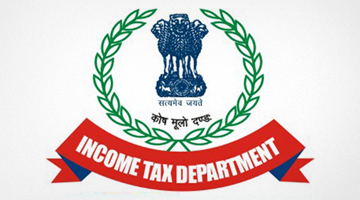Repeated reduction in Tax Revenue Projections in Budget is Worrisome
JULY 10, 2019
By TIOL Edit Team
THE Union Budget (UB) is a three-dimensional knowledge product. One of the biggest dimensions is articulated well. The second dimension, a bit unpleasant one, is muted one or couched in cautious phrases. The third one is left unsaid or is scattered across all documents. This often goes by the idiom 'devil lies in the detail'. There is, thus no single yardstick with which one should judge any UB.
Finance Minister Nirmala Sitharaman has excelled on the first dimension. She communicated and articulated well the political objectives. In her maiden budget, she has made a good start in taking up promises listed in BJP's Manifesto for Lok Sabha polls.
Mrs. Sitharaman also meticulously recalled major schemes implemented during the first tenure of Modi Government. She reeled off success achieved under these schemes. She thus deserves full marks for budgetary announcements.
How much of the budgetary outlays are actually spent and how many new schemes remain struck in the planning stage would, of course, be known only at the end of current fiscal 2019-20.
As for the second dimension, Mrs. Sitharaman left everyone perplexed by skipping a reference to fiscal deficit. In fact, the word 'deficit' appears only once in her budget speech. It was made to disclose intention to regularize tax incentive for rupee-denominated foreign bonds with a view to reducing current account deficit. Regularization would be done by amending the Income Tax Act.
Her speech is thus deficient on several counts. She, for instance, totally banished the word 'corruption' from her speech. She deftly avoided this word while announcing her proposal for 'faceless e-assessment' of income taxes taken up for scrutiny.
Explaining this welcome initiative, she said "the existing system of scrutiny assessments in the Income-tax Department involves a high level of personal interaction between the taxpayer and the Department, which leads to certain undesirable practices on the part of tax officials. To eliminate such instances, and to give shape to the vision of the Hon'ble Prime Minister, a scheme of faceless assessment in electronic mode involving no human interface is being launched this year in a phased manner".
She did not unveil the road-map for high-speed drive to expanding the size of economy to $ 5 trillion by 2024. She should have given tax buoyancy/year required to achieve this goal. She should have specified share of agriculture, mining, manufacturing and services in the targeted GDP for 2024. More important is the need to project export growth rate for sustained GDP growth of 8%. The projected export target must be achieved to bring about qualitative change in growth of GDP and jobs.
Let us now turn to the third dimension of the Budget. It pertains to reading budget documents in detail and to understand the significance of vital content by comparing them with corresponding data in previous budgets.
Decoding of what is unsaid creates a cause for worry. The decoded picture shows the economy is entering stagnant phase, to put it mildly. Last year's Medium Term Fiscal Policy (MTFP) Statement admitted: "the economy is still not completely out of the rough". There is no such admission in latest MTFP-cum Fiscal Policy Strategy Statement (FPSS) that forms part of UB 2019-20. This is in spite of the fact that certain economic indicators have deteriorated over one year.
The gross tax revenue (GTR), as percentage of GDP, is projected to decline to 11.7% in 2019-20 from revised estimate (RE) of 11.9% in previous year. RE itself marks slide from budget estimate (BE) of 12.1% of GDP made in 2018-19 budget.
MTFP-cum-FPSS has projected GTR to decline to 11.6% in 2020-21. GTR is estimated at same level in 2021-22. GTR was 9.9% of GDP in 2014-15, the first year of Modi Government in its first term.
This shows modest growth in GTR over five years. The disheartening GTR projections for the medium-term brings us to Goods and Services Tax (GST) and demonetization. Why have they not fired up GTR growth?
What led Finance Ministry to scale down its GTR projections made in MTFP for 2018-19? What led it stage a further climb-down from the numbers given in the interim budget for 2019-20?
MTFP for 2018-19 had projected GTR at 12.4% for 2019-20 and 12.7% for 2020-21. Similarly, the Interim Budget for current fiscal, presented in January 2019, had projected GTR of 12.1% for 2020-21 and 12.2% for 2021-22. The BE of GTR for 2010-20 was 21.1%.
We hope Finance Ministry would enlighten public on this issue in the near future. This is because lower tax revenue means lower revenue for capital investment and for maintenance expenditure. This impacts growth of GDP.
Scaled-down growth of GTR means the Government would have to fire all cylinders on the non-tax revenue front to make for projected shortfall. The scope for enhancing borrowings is limited as the Government is statutorily committed to phased reduction in debt.
The reduction in GTR projections has led to rise in revenue deficit from 2.2% of GDP 2018-19 to BE of 2.3% in 2019-20.
According to MTFP-cum-FPSS, "the growth rate of GST and Customs is expected to remain roughly at the rate of growth of the economy". In real terms, the GDP growth rates for 2020-21 and 2021-22 work out to 7.3 and 7.5 percent.
This implies matching growth in both GST and customs.
Can economy and indirect taxes record robust growth in subsequent years to chase $ 5 trillion tag? What about sustained 10% growth in GDP projected by Niti Aayog in 2016 to eradicate poverty by 2030?
Questions originating from reading of the budget and allied documents are many. We hope the Government would resolve these issues through serious & forthright discourse with stakeholders to grapple with challenges in the way of Sabka Saath Sabka Vikas Sabka Vishwas.













